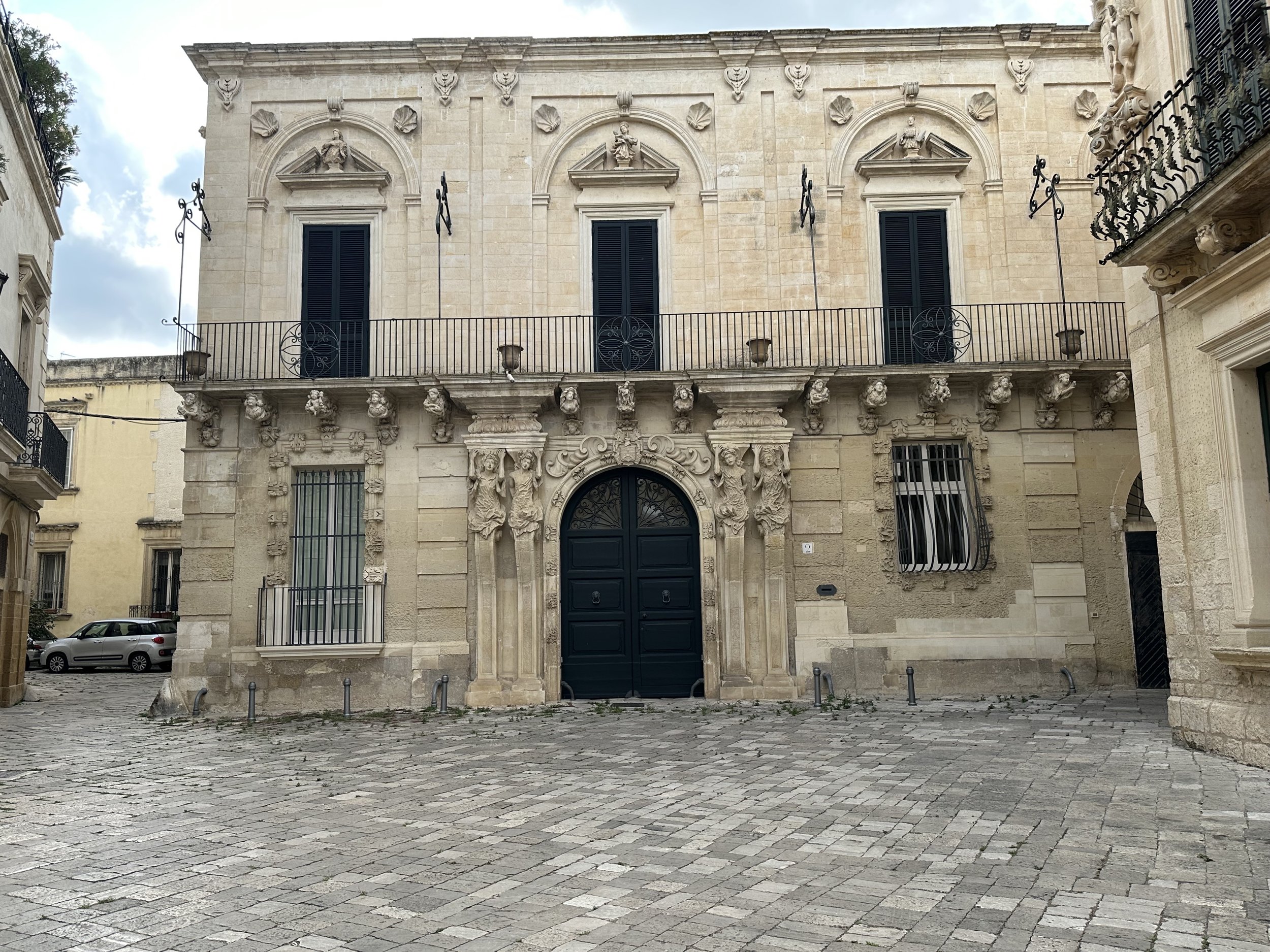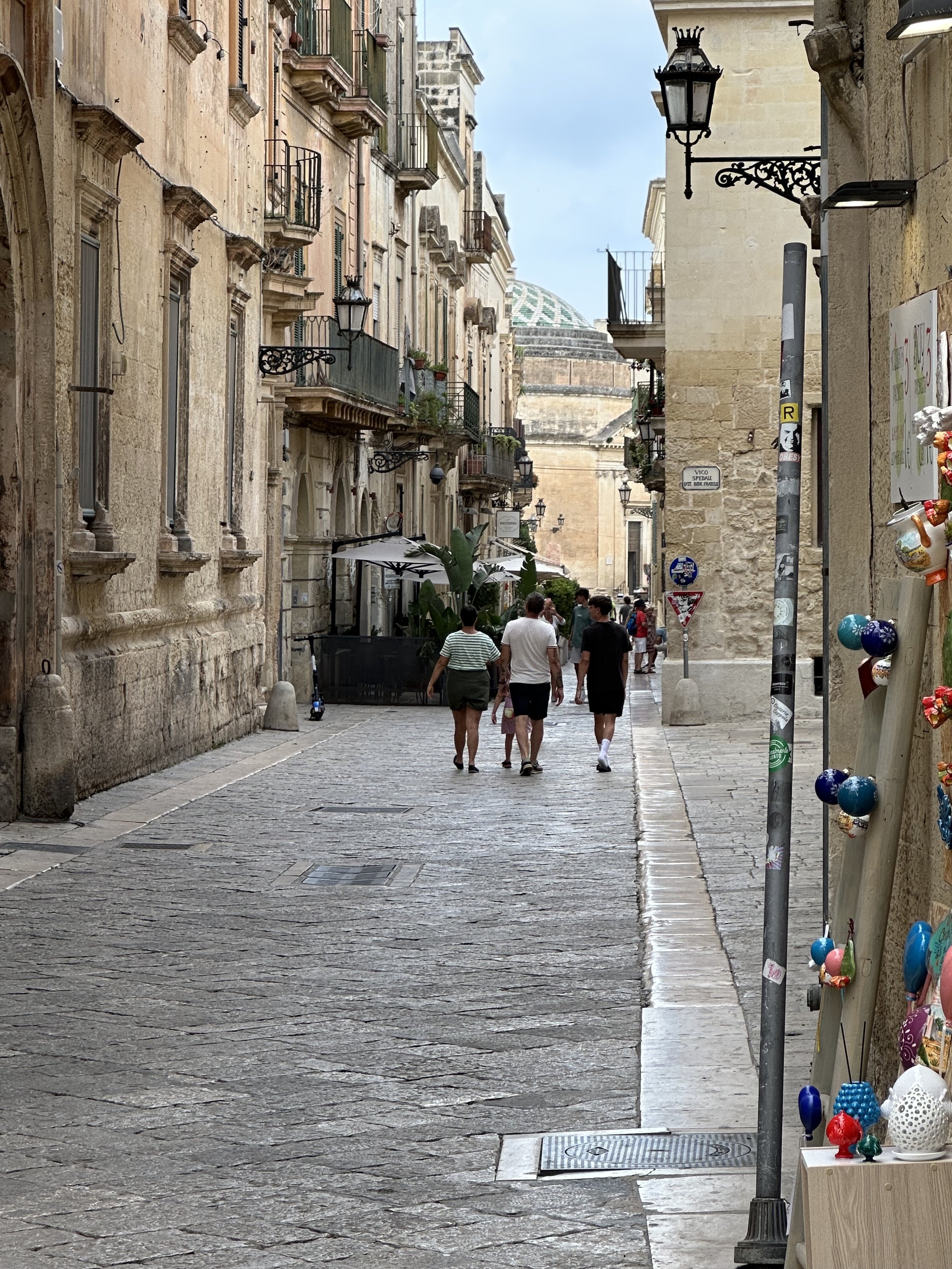Introduction to the city of Lecce
Lecce, often hailed as ‘the Florence’ of southern Italy, is an aesthetic treasure to behold featuring Baroque style art and architecture; however, this is a unique type a southern Italian Baroque. Picture Santa Maria Della Vittoria in Rome, a church that exemplifies the Baroque style in Rome. It features a predominance of gold yet also contains other pastel and vibrant colors alike. Color contributes to the theatricality that defines the Baroque artistic style in the conventional understanding, but not in Lecce. The monochromatic light colored limestone with a slight honey hue is ubiquitous in the city. Another defining characteristic of the Baroque in Lecce is the time period. The artistic style known as Baroque started in Rome around the year 1600 as part of the counter-reformation, in response to the protestant reformation. The style was adopted in Lecce in the late 16th century, closer to the 1700s. The absence of diverse colors in the Baroque Leccese is not only about aesthetics, however. It is also about practicality and proximity. ‘Lecce’ is actually the name of the stone (a type of limestone) that is found in the Salento region, and this readily available natural resource is also responsible for the unique look as artists used this stone to build.
Thus, the proximity to two seas, the unique artistic heritage, and of course culinary offerings secured Lecce as a must-see regional feature. Read more about the architectural highlights of the Duomo di Lecce and the Chiesa di Santa Croce in the spots post. Other Baroque treasures throughout the city are abundant, at every turn. Seek out the Palazzo Dei Celestini (which is attached to the church of Santa Croce) and the Chiesa di San Matteo. The Palazzo Marrese with almost haunting ‘caryatids’ (the female statues appearing as columns, two on each side.) The painstaking detail of the Baroque Leccese is fully evident here.
Be sure to visit San Niccolò and Cataldo which was built by the Normans in the 12th century; however, like most churches, it was rebuilt in 1716. Interestingly, however, the architect Giuseppe Cino preserved the Romanesque portal and rose windows; thus, you can see a confluence of styles represented here. Check out this article for a quite comprehensive listicle of churches to visit while in Lecce.
Another must see feature is the Porta Napoli (the Napoli gate) which was built in 1548 for the visit of Charles V, the Holy Roman Emperor. Just nearby is the octagonal shaped church of Santa Maria della Porta. What you see today was rebuilt in the 19th century with a neo-classical facade, but as explained in the blog post on by Jet Setting Fools: “In 1567, the chapel stood outside the city walls and displayed a picture of the Virgin Mary. When a crippled woman looked at the image, she was suddenly able to walk again. Considered a miracle, it was determined that the church should be expanded and included within the city walls.”
I chose Lecce in the Salento region for the strategic location and proximity to both coasts. Therefore, you have the unique city of Lecce, plus the opportunity to visit some of the most beautiful seaside towns in Italy; namely, Gallipoli and Otranto are special, and they form the triangle of Salento. The area (Salento) has been submitted as an UNESCO world heritage site, and it certainly merits this honor. Read more about the justification for submission here. In this description, the Salento peninsula is praised for the baroque architecture found in not only Lecce, but also Gallipoli, Otranto and other towns in the area.
Finally, there are great options for AirB&Bs in Lecce. Our Airbnb was gorgeous, centrally located with wonderful and generous hosts. In 2023 my mom stayed in a hotel called the Risorgimento Resort which is extremely centrally located. She said the staff was particularly helpful and that she would recommend to anyone looking for a hotel in the very center. For even more upscale accommodations around the region of Puglia, explore The Thinking Traveller villas.



